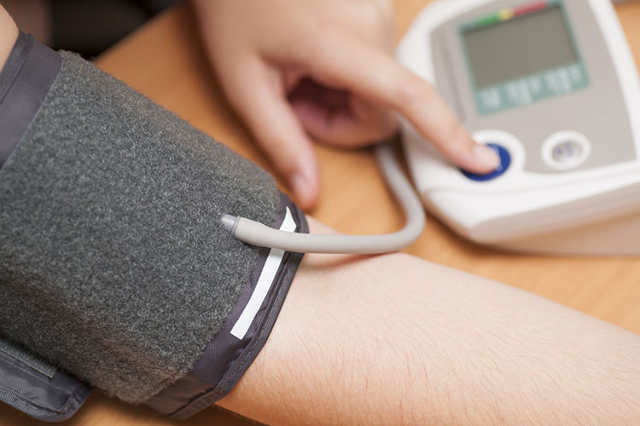Heed the warnings of hypertension
As a physician patients touch your heart and life in a special manner. Dedicated to making a difference in their well-being...it is a connection that transcends just a chance meeting and continues to speak to your heart and mind long after they leave your care. I want to share one patient's story (with his permission, of course).
I took care of a young man in his 30's with newly diagnosed kidney failure. He would need dialysis—a treatment that performs some of the functions of the kidneys—three times a week, for the rest of his life. This husband and father of three children under the age of six years, had uncontrolled high blood pressures that overwhelmed his kidneys. And, too, it had caused two heart attacks and a mini stroke. He was very saddened (as am I) by the fact that this could have been prevented. He encouraged me to share "what you need to know."
Dr. Nina's What You Need To Know: About Hypertension
What is a blood pressure reading?
A measurement of the force against our artery walls as our heart pumps blood through our body. The pressures depend on the amount of blood our heart pumps and the amount of resistance to blood flow in our arteries, much like a garden hose. Attaining a blood pressure reading involves placing a cuff around our biceps and inflating it followed by slowly deflating the cuff.
Why are there two numbers?
The top number is named the systolic blood pressure (SBP); it is the pressure in our arteries when our heart beats. The bottom number, diastolic blood pressure (DBP), is the pressure in our arteries in between beats; or when the heart is relaxed.
What is considered normal, what is considered high?
• Normal blood pressure: 120/80 mm Hg or less
• Prehypertension (borderline): a SBP of 120-139 or a DBP of 80-89 mm Hg
• Stage 1 hypertension: A SBP of 140 to 159 mm Hg or a DBP of 90-99 mm Hg
• Stage 2 hypertension (more severe): a SBP of 160 mm Hg or higher or a DBP of 100 mm Hg or higher.
How often should I get it checked?
Starting at age 18, we should get a blood pressure reading at least every 2 years. Our blood pressure should be checked in both arms to make sure there is not a difference. Depending on risk factors, it may be necessary to have more frequent blood pressure testing. The next time you are at your local drug store, check to see if they have a machine that allows you to test your blood pressure with the push of a button.
Hypertension is not diagnosed after one elevated reading. This is because our blood pressure can fluctuate during the day or because we experience "white coat syndrome," a phenomenon where nearly 20% of the population experience increases in their blood pressures when measured in a doctor's office or hospital setting. If our pressures are elevated, our doctor will likely take 2-3 more readings at 3 or more separate appointments or ask us to record our blood pressure at home several times a day before diagnosing us with hypertension.
What are risk factors?
Age; family history; being overweight or physically inactive; using tobacco; consuming too much salt or too little potassium; and stress.
What are symptoms?
Unlike chest pain that can be a signal for a heart attack, it is possible to have hypertension for years and years without any symptoms. Unfortunately, during this time, our blood vessels and other organs can incur damage. In the event of malignant (deadly) hypertension, it is possible to experience severe headaches, nausea or vomiting, confusion, vision changes, or a nosebleed. These are emergencies and need immediate medical attention.
What can happen if I don't take care of my hypertension?
The excessive pressure on our artery walls caused by high blood pressure can damage our blood vessels, as well as organs in our body. The higher the blood pressure and the longer it goes uncontrolled, the greater the damage.
Specifically, hypertension can lead to heart attacks; heart failure; strokes; aneurysms (a bulge in a blood vessel that can lead to the vessel bursting); kidney failure; and vision loss.
If I get diagnosed with hypertension, what next?
Lifestyle changes will include consuming less salt, exercising regularly, quitting smoking, and maintaining a healthy weight. Our doctor may also prescribe anti-hypertensive medications to treat our blood pressure, in addition to lifestyle changes. It may be necessary to try different medications to find the optimal one—effective and with minimal side-effects—or to combine drugs with different mechanisms of action to get our numbers under control.
Hypertension can disable and kill--it is responsible for more than 348,000 American deaths a year. However, when diagnosed early, it gives our doctors access to several weapons in their arsenal to fight the disease and affords us the option of making lifestyle changes. But the first step starts with you...please check your blood pressure.
This information is for educational purposes and should not be considered specific medical advice. Always consult with a qualified medical professional regarding your individual circumstances.
Dr. Nina Radcliff is dedicated to her profession, her patients and her community, at large. She is passionate about sharing wise preventive health measures.




























